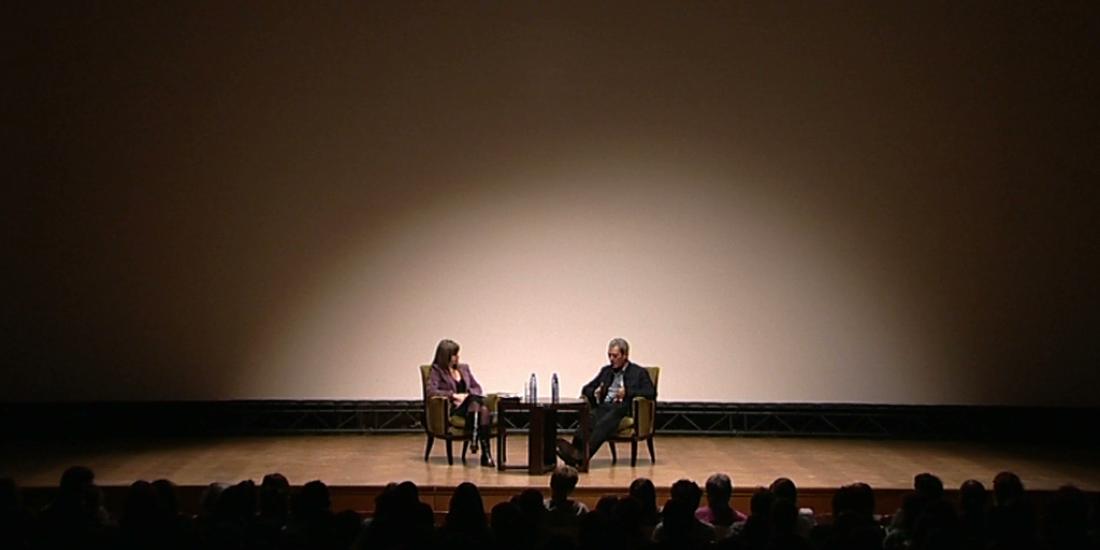"Terrorism," says Paul Auster as we walk through the city. "Please drop your bomb here." Just a few steps into the journey with the Austers, and you start to see Brussels with different eyes. The eyes of writers with a keen sense for worlds beyond the reassuring surface. A few steps earlier, Auster asks if I had seen those drug addicts. A man bangs his head against a shop window. No, I had not. Auster clearly feels uncomfortable. "You don't see something like this in New York," Siri Hustvedt immediately puts me on edge.
Paul looks around with heightened attention. "Isn't there a statue of a woman in a fountain nearby?" Without knowing it, I step into a novel by the American writer. A few moments later, we join Juliette Duret from Bozar Cinema at a table in the 't Ogenblik restaurant. Fountain? Woman? Statue? What was he talking about? I have the answer in my bag. In a bag is a copy of Man in the Dark, Auster's recently released novel. Later, upon reading, I find out that the mentioned statue plays a crucial role in the novel. It's just half a street away, in line with the Beenhouwersstraat.
Paul Auster came to Brussels at the invitation of Bozar and the Cinematek to present his feature film The Inner Life of Martin Frost in the Henry le Boeuf Hall. It was the second film he co-wrote and directed with Wayne Wang. Film is one of the keys to Paul Auster's unique storytelling art: ingeniously composed novels that touch on philosophical questions, intricately woven narratives that have the momentum of a thriller.
The script for The Inner Life of Martin Frost is based on a fictional film from Auster's novel The Book of Illusions, which in turn is based on a script for a short film that never materialized. "Exactly," laughed Auster over the phone from New York during a conversation I had with him beforehand for Bozar Magazine, "you've got it. It's complicated." The main character is a Buster Keaton-like maker of silent films who one day disappears from the face of the earth and starts making films again on one condition: no one can see them, and they must be destroyed after his death. But does a film exist if no one sees it? Auster: "No, it doesn't exist. But as long as the film is physically there, there's always the possibility that someone will find it. Film is such a public art form. It's absolutely unthinkable to make a film that no one will see. And yet, that's exactly what Hector does."
After the public conversation with VRT journalist Annelies Beck, Auster exited stage right and rushed through the corridors. He wanted to soak up the atmosphere at the back of the hall. He also didn't want to miss the end of the film to feel the audience's reactions. Auster was as happy as a child that more than two thousand people had shown up and were enthusiastically applauding. Paul Auster and Siri Hustvedt happily signed their latest novels in the Bozar Bookshop. The signing session lasted longer than the film.


